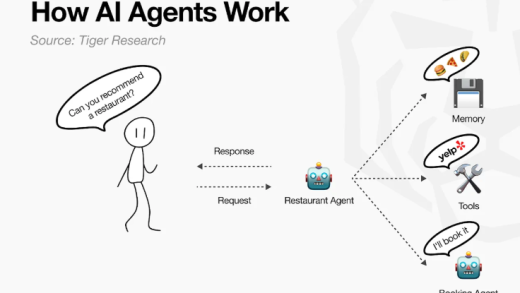Read More《2800亿估值,特朗普家族“核心代币”来了,9月1日启动交易》
Positive Reviews: The Innovative Design of WLFI Tokens and the Breakthrough in the Compliance of the Cryptocurrency Market
The WLFI token supported by the Trump family is about to be listed with a fully diluted valuation (FDV) of over $40 billion. This event has attracted global attention not only because of its deep connection with a political family but also because of its innovative attempts in technical design, market mechanisms, and regulatory narratives, providing a composite sample of “compliance + stability + strategic resilience” for the cryptocurrency industry.
I. The RWA Stablecoin System Builds the “Safety Foundation” for Cryptocurrencies
The core ecosystem stablecoin of WLFI, USD1, breaks through the “death spiral” risk of traditional algorithmic stablecoins. According to the audit report of Crowe LLP, the $2.207 billion reserve of USD1 is 100% composed of high – credit real – world assets (RWA), of which 85% are government money market funds. This “real – money” reserve model stands in sharp contrast to the “empty – rotation game” of algorithmic stablecoins such as Terra/LUNA. In essence, it shifts the value anchoring of cryptocurrencies from “market confidence” to “endorsement by real assets”.
For the cryptocurrency industry, this design is of milestone significance. For a long time, the trust crisis of stablecoins (such as the suspicion of insufficient reserves of USDT) has been a key pain point restricting the industry’s development. WLFI provides a replicable template for the compliance of stablecoins through third – party custody (BitGo), independent auditing (Crowe LLP), and a risk isolation mechanism of “separating operations from the brand”. This combination of “asset transparency + regulatory custody + independent auditing” may become the standard configuration for mainstream stablecoins in the future, promoting the in – depth integration of cryptocurrencies and traditional finance (TradFi).
II. The $750 – million Strategic Adjustment Mechanism Enhances the Market’s Ability to Resist Fluctuations
The “no – time, no – price limit” clause in ALT5 Sigma’s commitment to purchase $750 million worth of WLFI tokens, although seemingly abnormal, actually injects an “asymmetric advantage” into market games. Traditional cryptocurrency projects’ market adjustments mostly rely on community self – governance or passive responses to fluctuations, while WLFI’s strategic funds are more like an “active defense arsenal” – it can buy at low prices to support the market during market panics and deter short – sellers from malicious short – selling. This design provides “anti – fragility” resilience for the project. Especially in the context of frequent bull – bear transitions in the cryptocurrency market, it can effectively reduce the risk of extreme price fluctuations of the token.
For investors, this mechanism directly improves the “safety margin” of WLFI. Tokens purchased by early investors at $0.015 – $0.05 theoretically have little risk of becoming worthless under the support of strategic funds. For long – term holders, the flexible use of strategic funds also guarantees the stable growth of the token’s value. This market strategy of “attack when possible, defend when necessary” is one of the core competitiveness of WLFI that differentiates it from most “air coins”.
III. The “Compliance Model” Narrative Fits the Regulatory Trend and Opens the Door to Traditional Finance
The greatest strategic value of WLFI lies in its deep connection with the US cryptocurrency regulatory orientation. Currently, the US is accelerating the promotion of cryptocurrency compliance (such as the “Responsible Financial Innovation Act” and the “Stablecoin Act”). WLFI’s stablecoin system exactly meets the core regulatory requirements of “transparent custody, real assets, and independent auditing”. Its positioning as an “innovative compliance model in the US” gives it a first – mover advantage when applying for regulatory licenses (such as the BitLicense from the New York State DFS) and connecting with traditional financial institutions (such as banks and asset management companies).
This “regulatory certainty premium” has been reflected in the market pricing – the futures price of WLFI at $0.20 – $0.30 is much higher than the pre – sale price. In essence, it is investors’ early bet on its future regulatory approval and access to the TradFi ecosystem. If WLFI successfully integrates into the traditional financial system, its value may expand from a single cryptocurrency asset to a “bridge connecting cryptocurrencies and fiat currencies”, thereby promoting the growth of liquidity and the user base in the entire DeFi market.
IV. The Trump Family IP Brings a “Cross – circle Effect” to the Cryptocurrency Project
Donald Trump’s personal holding of 15.75 billion WLFI tokens (worth over $6 billion) and his son Eric’s joining the board of the cooperation partner essentially deeply bind the political IP with the cryptocurrency project. This cross – border combination of “politics + finance + technology” has greatly increased the public’s attention to WLFI. For the cryptocurrency industry, the participation of the Trump family is like a “national popular science” for the project – from traditional investors to ordinary people, they will all pay attention to WLFI because of the “Trump” label, which indirectly promotes the popularization of cryptocurrencies.
Negative Reviews: Potential Risks of Political Association, Ethical Controversies, and Market Games
Although WLFI has prominent design highlights, its deep connection with the Trump family, the complexity of political narratives, and the “unconventional” characteristics of market mechanisms also pose multiple risk hidden dangers.
I. Regulatory Uncertainty Caused by Political Association
Although WLFI’s “compliance model” narrative fits the regulatory trend, its interest connection with the Trump family may trigger “reverse regulatory scrutiny”. The “GENIUS Act” promoted by Trump previously did not include a “conflict – of – interest prevention clause”, and WLFI’s stablecoin system was launched exactly under the framework of this act, which has raised questions about “the existence of interest transfer between policy – makers and project parties”. If there is a change in the US government or a shift in regulatory direction in the future (such as the Democratic Party taking power and strengthening cryptocurrency regulation), WLFI may become a key target for review due to its “political label”, and there is even a risk that the “compliance model” may turn into a “negative example”.
More importantly, Trump’s personal political fate directly affects the market confidence in WLFI. If Trump loses the 2024 presidential election or his image is damaged due to legal disputes (such as the “hush – money” case), the value of the WLFI tokens he holds may shrink significantly due to the “depreciation of the IP”, which may trigger panic selling by investors. This binding model of “personal risk of a political figure = systematic risk of the project” essentially entrusts the project’s fate to uncontrollable external variables, which goes against the original intention of “de – centralization” of cryptocurrencies.
II. The “Market Manipulation” Controversy of the Strategic Adjustment Mechanism
Although the $750 – million acquisition clause of ALT5 Sigma is packaged as a “strategic regulator”, it may also be regarded as a “market manipulation tool” by regulatory authorities. The US “Dodd – Frank Act” clearly prohibits the act of “influencing market prices through capital advantages”. WLFI’s “no – time, no – price limit” acquisition can theoretically intervene in the market at any time – whether it is to boost the price or support the market, it may be questioned as “artificially controlling prices”. If the SEC intervenes in the investigation in the future, this mechanism may become the biggest obstacle on WLFI’s compliance path.
In addition, this expectation of “official support” may also distort the market pricing mechanism. Investors may ignore the project’s fundamentals due to their reliance on strategic funds, leading to the token price deviating from its actual value. If the project party overly relies on capital intervention, it may weaken the community’s self – governance ability and ultimately damage the project’s long – term viability.
III. The Sustainability Risk of Over – Reliance on Personal IP
The high valuation of WLFI largely stems from the IP effect of the Trump family, rather than the uniqueness of its technology or ecosystem. In the current cryptocurrency market, the historical performance of “celebrity tokens” (such as Elon Musk’s Dogecoin) has proven that projects overly relying on personal IP often have difficulty in sustaining. When the celebrity’s popularity fades or their image is damaged, the token’s value may plummet. If WLFI fails to build an ecosystem independent of the Trump family after its listing (such as attracting other institutional cooperation and developing practical application scenarios), its “political IP dividend” may be quickly exhausted, and it may ultimately become a “speculation tool”.
IV. The Hidden Danger of the “Reserve Black Box” in the Stablecoin System
Although the reserve of USD1 has been audited to be 100% RWA, there is still some ambiguity in the specific composition of the “high – credit assets”. For example, government money market funds may include short – term treasury bonds, repurchase agreements, etc., and their liquidity and risk levels vary depending on the specific underlying assets. If there is a sharp market fluctuation in the future (such as a sharp rise in the yield of US treasury bonds), the actual value of the reserve assets may shrink, which may affect the anchoring stability of USD1. In addition, the security of BitGo as a custodian also needs continuous verification – historical incidents of the collapse of cryptocurrency custodians (such as Mt.Gox and FTX) have repeatedly proven that “third – party custody” is not absolutely safe.
Advice for Entrepreneurs: Insights into the “Compliance, Resilience, and Independent Ecosystem Construction” of Cryptocurrency Projects from the WLFI Case
The listing of WLFI is not only an innovative experiment in the cryptocurrency industry but also provides multi – dimensional inspiration for entrepreneurs. Based on its positive and negative experiences, the following advice is worthy of attention:
I. Compliance Design Should Be “Pre – emptive” and “Transparent”
The success of WLFI largely stems from its “compliance model” narrative, which reminds entrepreneurs that in the early stage of launching a cryptocurrency project, compliance should be incorporated into the core design rather than being addressed as a post – hoc measure. Specifically, projects with strong financial attributes such as stablecoins should actively engage third – party audits (such as Crowe LLP), choose regulated custodians (such as BitGo), and clarify the risk isolation mechanism of “separating operations from the brand”. At the same time, the composition of reserve assets should be regularly disclosed to avoid trust crises caused by “black – box operations”.
II. The Market Adjustment Mechanism Should Balance “Initiative” and “Compliance”
Although the $750 – million strategic funds of WLFI enhance the market resilience, its “unrestricted” clause may trigger regulatory risks. When entrepreneurs design similar mechanisms, they need to clarify the boundaries of “time, price, and scenarios” for the use of funds (such as setting price thresholds for intervention and disclosing the use of funds) to avoid being suspected of “market manipulation”. In addition, the use of funds should be determined through community governance (such as DAO voting) rather than relying on a single institution to enhance legitimacy.
III. Avoid Over – Reliance on “Personal IP” and Build an Independent Ecosystem
The IP of the Trump family has brought traffic to WLFI, but it has also planted hidden dangers for sustainability. Entrepreneurs need to realize that the popularity of personal IP is a “fast – moving consumer good”, and the long – term value of a project should be based on technological barriers (such as unique smart contract design), practical application scenarios (such as DeFi lending and on – chain payment), and community consensus. For example, if WLFI can launch on – chain lending protocols and cross – border payment tools based on USD1 after its listing, its value will shift from a “political label” to a “practical tool”, thereby reducing its reliance on personal IP.
IV. Pay Attention to the Risk Management of “Macro Variables”
The fate of WLFI is deeply bound to US politics and regulatory policies, which reminds entrepreneurs to establish a “macro – risk early – warning mechanism”. For projects involving stablecoins and compliance narratives, they should closely track policy dynamics (such as the revision of the US “Stablecoin Act” and the enforcement direction of the SEC) and design “response plans for policy shifts” in advance (such as adjusting the structure of reserve assets and applying for licenses in multiple jurisdictions). In addition, for projects associated with political figures, the impact of “negative IP events” should be evaluated, and the impact of a single risk source can be reduced by diversifying equity and introducing diversified partners.
V. Strengthen “User Education” to Reduce Market Game Risks
The high valuation of WLFI reflects the market’s optimistic expectation of its “regulatory certainty”, but investors may ignore potential risks (such as political association and reserve fluctuations) due to information asymmetry. Entrepreneurs should actively use channels such as whitepapers and community announcements to clearly explain the risk – return characteristics of the project to investors (such as “low risk of systematic collapse but high policy risk”) to avoid subsequent disputes caused by “over – packaging”. At the same time, they can improve users’ risk awareness through online seminars and risk – warning documents.
Conclusion: The listing of WLFI is a bold attempt at the integration of “politics + finance + technology” in the cryptocurrency industry. Whether it succeeds or not will test the feasibility of the model of “compliant stablecoins + strategic fund adjustment + political IP empowerment”. For entrepreneurs, the WLFI case is both an “innovation benchmark” and a “risk warning” – while pursuing high valuations, they should always prioritize compliance, sustainability, and user interests to ensure long – term stability in the cryptocurrency market.
创业时评《2800亿估值,特朗普家族“核心代币”来了,9月1日启动交易》
- Startup Commentary”Building LLMs: The Knowledge Graph Foundation Every AI Project Needs”
- Startup Commentary”The 17th Year of Tmall Double 11 and the New Map Rewritten by AI”
- Startup Commentary”How to Prepare Your Data for Artificial Intelligence”
- Startup Commentary”Small and Medium-sized Banks: “Cutting the Tail” in Loan Assistance”
- Startup Commentary”The Six AI Giants on Stage: AGI Is No Longer a “Future” Thing”




